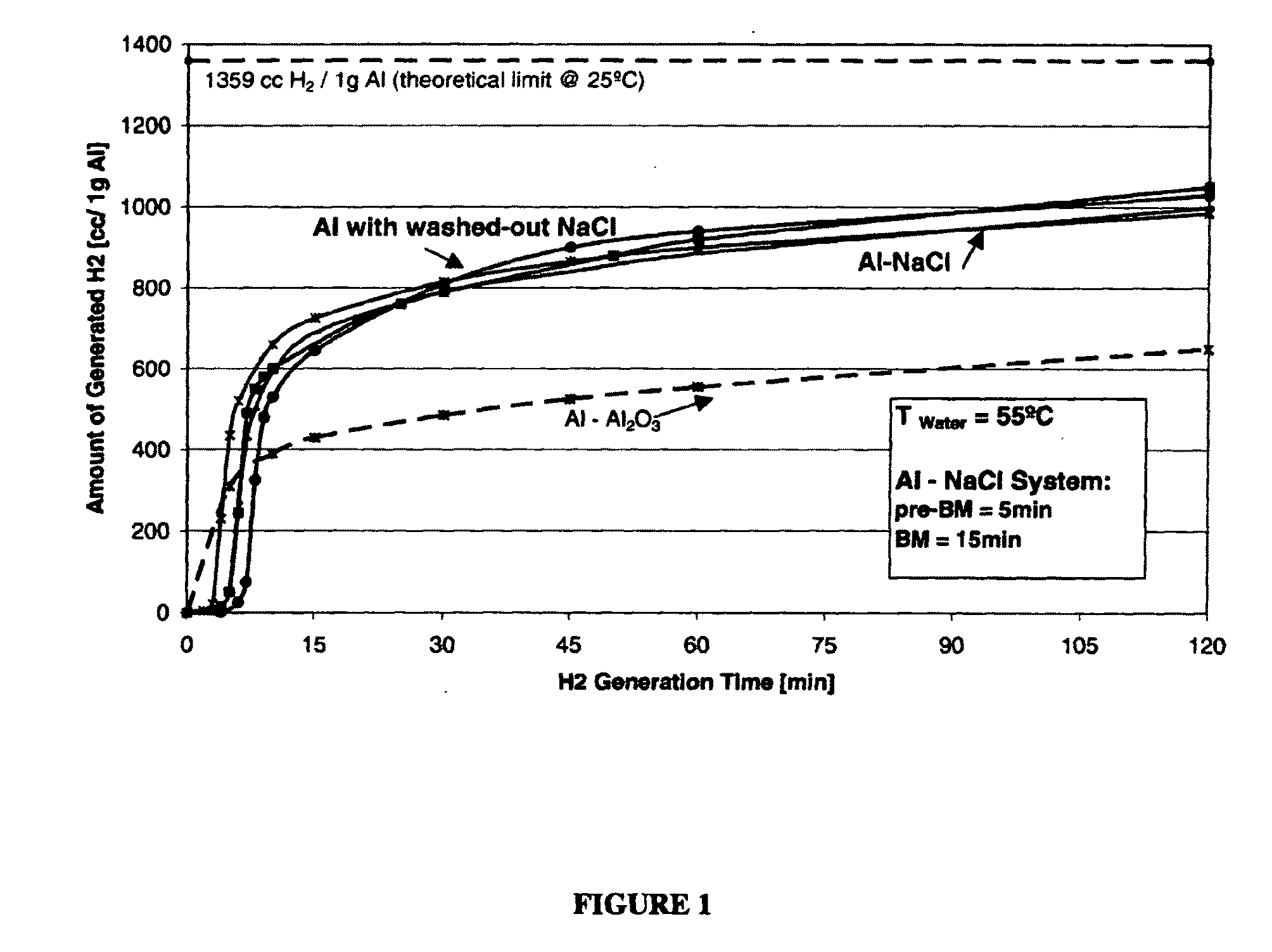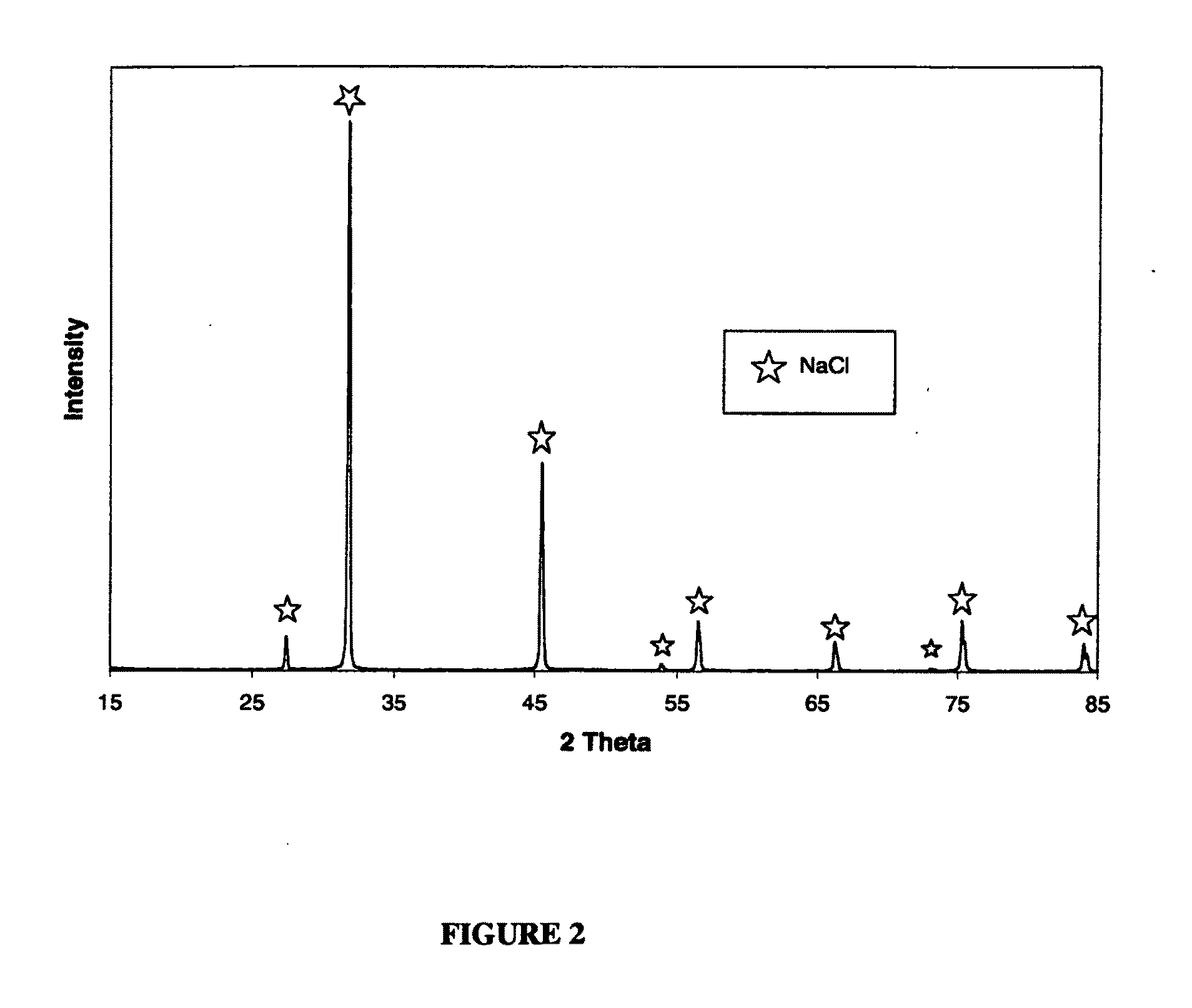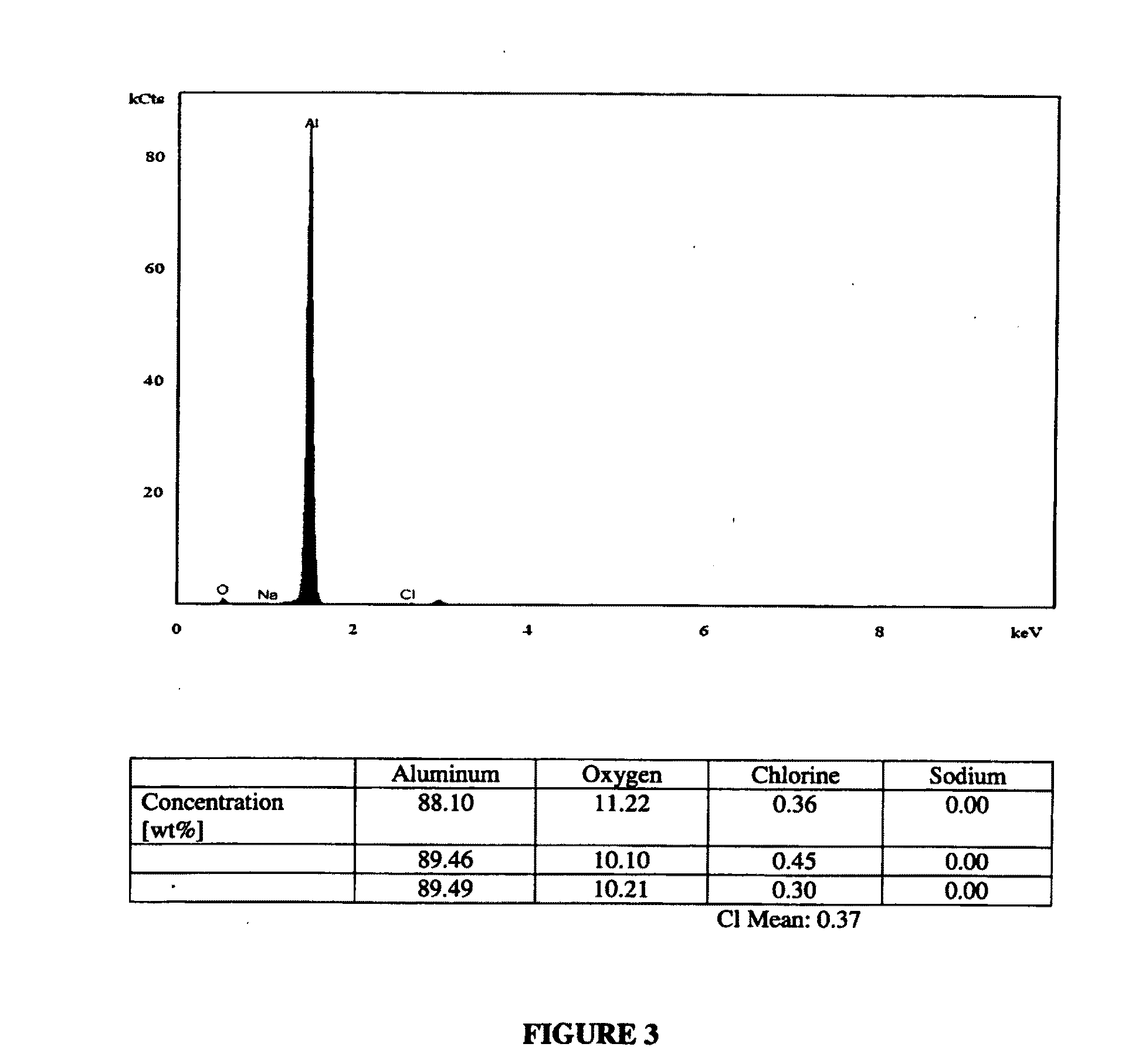Microporous metals and methods for hydrogen generation from water split reaction
a microporous metal and hydrogen generation technology, applied in the field of hydrogen generation, can solve the problems of high cost, high cost, and high cost of raw materials, and achieve the effects of reducing the cost of raw materials
- Summary
- Abstract
- Description
- Claims
- Application Information
AI Technical Summary
Problems solved by technology
Method used
Image
Examples
example 1
[0144]Sodium chloride, NaCl, (99.9%, Fisher Chemicals, 300 μm average particle size, 1.1 g) was first pre-milled in the Spex mill for 5 minutes. Thereafter, the pre-ball milled (pre-BM) sodium chloride was mixed with the standard Al powder (99.7% Al, common grade, 40 μm average particle size, 1.1 g) and Spex-milled together for another 15 minutes. 2 g of the resulting powder mixture was enclosed in a paper filter bag and immersed in tap water at approximately pH=6 and T=55° C. Two samples were prepared for reference purpose. The total amount of hydrogen released after 1 hr by Sample #1 was 885 cc / 1 g of Al and by Sample #2 900 cc / 1 g of Al (average 892.5 cc / 1 g of Al) which accounts to 66% of the total theoretical reaction yield value (FIG. 1; as indicated by arrows). The generated hydrogen amount surpassed the amount of hydrogen generated by the standard Al—Al2O3 system by 60%.
example 2
[0145]The Al—NaCl powder mixture was prepared as described in Example 1. After milling, 2 g of the powder was placed in a beaker and washed in 100 ml cold tap water (Tstart=12° C.) by start stirring with a glass rod occasionally to dissolve and wash the salt out of the aluminum matrix. Two powder samples were prepared (Sample #3 and Sample #4). The immersion time of the powder in cold water was approx. 10 minutes. The remaining insoluble powder (i.e. predominantly Al) was filtered into a paper filter bag and still wet immersed in tap water at approximately pH=6 and T=55° C. for hydrogen generation. The total amount of hydrogen released after 1 hr by Sample #3 was 920 cc / 1 g Al and by Sample #4 940 cc / 1 g of Al (average 930 cc / 1 g of Al) which accounts to 68% of the total theoretical reaction yield value (FIG. 1; as indicated by arrows). The generated hydrogen amount from the washed-out aluminum powders was slightly higher compared to the amount of hydrogen generated from Al—NaCl sys...
example 3
[0150]To further reduce the amount of salts in the washed-out aluminum, Al-deforming agent powder mixtures were stirred during the wash-out process and kept for an extended period of time in the cold water.
[0151]Two Al—NaCl (50 wt %) powder mixtures, Sample #5 and #6, were prepared as described in Example 1 and washed in 100 ml cold tap water (Tstart=12° C.) by either stirring with a glass rod occasionally or by using a magnetic stirrer to substantially dissolve the salt out of the aluminum matrix. The immersion time of the powder in cold water has been extended to 2 hours and 3 hours (see Table 1 below). The remaining powder (i.e. predominantly Al) was filtered into a paper filter bag. The solution, which contained also the smallest Al particles that could not be captured by the filter, was placed in a dryer at 65° C. for at least 24 hours. The amount of the dissolved salt was determined by weighing of the residue after water evaporation.
[0152]As a result of the extended wash-out t...
PUM
| Property | Measurement | Unit |
|---|---|---|
| size | aaaaa | aaaaa |
| size | aaaaa | aaaaa |
| size | aaaaa | aaaaa |
Abstract
Description
Claims
Application Information
 Login to View More
Login to View More - R&D
- Intellectual Property
- Life Sciences
- Materials
- Tech Scout
- Unparalleled Data Quality
- Higher Quality Content
- 60% Fewer Hallucinations
Browse by: Latest US Patents, China's latest patents, Technical Efficacy Thesaurus, Application Domain, Technology Topic, Popular Technical Reports.
© 2025 PatSnap. All rights reserved.Legal|Privacy policy|Modern Slavery Act Transparency Statement|Sitemap|About US| Contact US: help@patsnap.com



